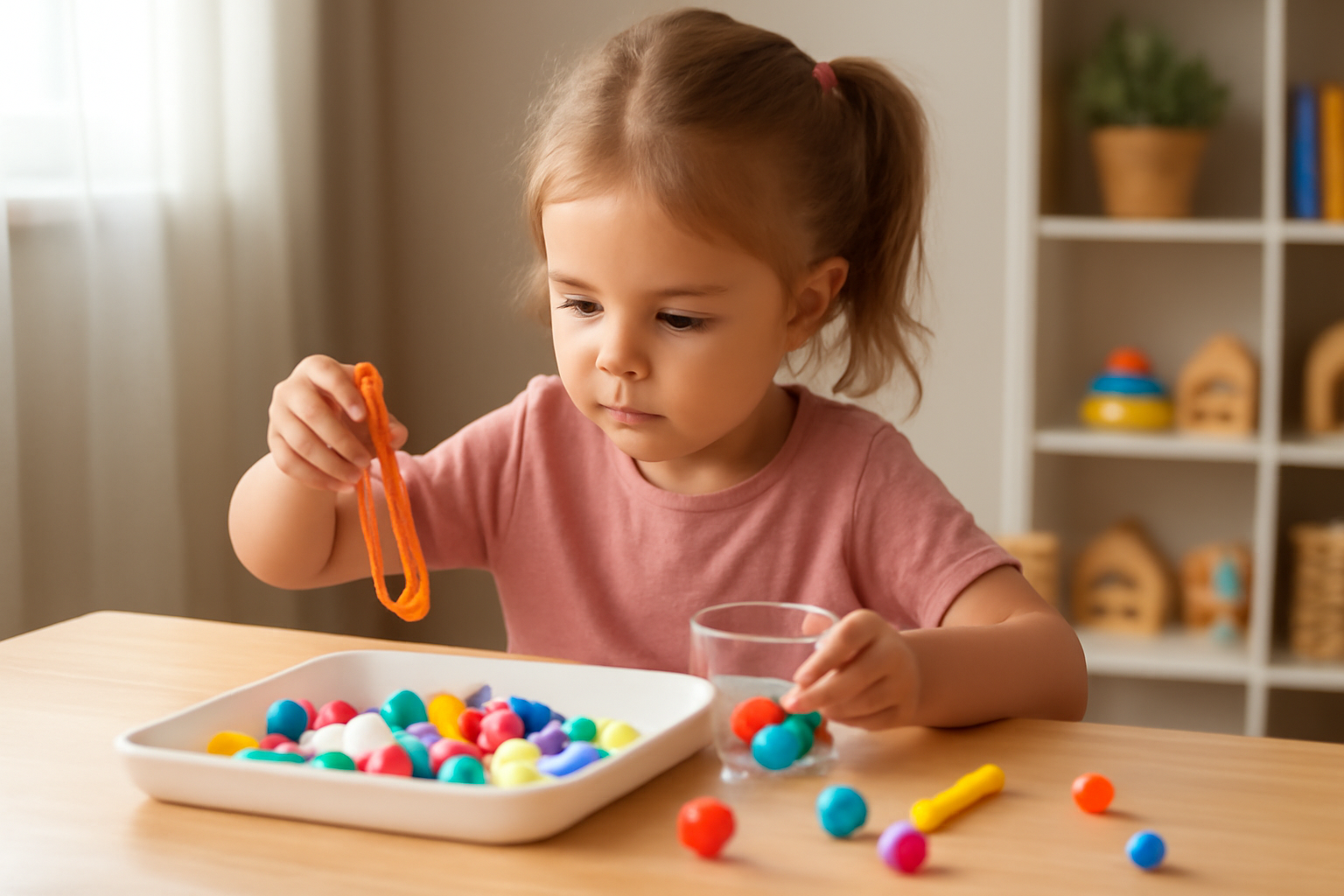Fine motor skills are essential for everyday tasks like writing, buttoning a shirt, or using utensils. In early childhood, developing these skills supports independence and prepares kids for academic success. Fortunately, many simple, hands-on activities can strengthen small hand muscles and improve coordination—right from the comfort of your home.
In this article, you’ll find practical, engaging fine motor activities designed specifically for preschool-aged children.
What Are Fine Motor Skills?
Fine motor skills involve the coordination of small muscles in the hands and fingers. These skills are crucial for tasks such as:
- Holding a pencil or crayon
- Using scissors
- Tying shoelaces
- Building with blocks
- Zipping jackets or buttoning clothes
Strengthening these skills early gives children the confidence and ability to manage school tasks and self-care.
1. Play with Playdough
Playdough is a classic tool for fine motor development. Children squeeze, roll, pinch, and shape it—all actions that build hand strength.
Try adding tools like:
- Plastic knives
- Cookie cutters
- Rolling pins
- Beads to press into shapes
Bonus idea: Create letters, numbers, or animals with playdough to combine creativity with literacy.
2. Threading Beads or Pasta
Threading beads onto a string or shoelace requires concentration and steady hands.
Use:
- Large wooden beads for beginners
- Colored pasta for a fun, budget-friendly option
- Pipe cleaners for easier gripping
Create patterns to add a math element, or make necklaces and bracelets for pretend play.
3. Use Tweezers or Tongs
Give your child small tongs or plastic tweezers and a pile of objects to move from one bowl to another.
Try:
- Pom-poms
- Cotton balls
- Mini erasers
- Beads
This strengthens the pincer grasp (thumb and index finger) used in writing.
Variation: Add a time challenge or color sorting element.
4. Cutting with Child-Safe Scissors
Learning to use scissors improves hand coordination and control. Start with basic straight-line cutting, then move to shapes.
Provide:
- Colorful paper
- Old magazines for cutting out pictures
- Printable cutting practice sheets
Supervise closely, and always use child-safe scissors.
5. Lacing Cards or DIY Boards
Lacing activities help with precision and bilateral coordination (using both hands together).
You can buy lacing cards or make your own by:
- Punching holes around the edges of cardboard cutouts
- Using shoelaces or yarn with taped ends
Try lacing shapes, animals, or letters to match learning themes.
6. Sticker Activities
Peeling and placing stickers may seem simple, but it requires careful hand control.
Try these activities:
- Create sticker scenes on blank paper
- Use stickers to form letters or shapes
- Match stickers to outlines or categories
Use small stickers for more of a challenge.
7. Water Transfer Activities
Set up a water transfer station with cups, spoons, eyedroppers, or basters.
Ask your child to:
- Move water from one container to another
- Add color for mixing experiments
- Squeeze and release different tools
This is a fun sensory experience that boosts grip strength and hand coordination.
8. Build with Small Blocks or LEGO®
Small construction toys challenge children to manipulate pieces with precision.
Encourage:
- Copying patterns
- Free-building scenes or vehicles
- Creating towers with alternating colors or shapes
This also promotes problem-solving and spatial awareness.
9. Finger Painting and Drawing
Art helps children develop fine motor skills while expressing creativity.
Set up:
- Finger painting stations
- Dot markers
- Crayons and pencils for tracing or free drawing
Let them draw shapes, letters, or their favorite animals.
Tip: Use vertical surfaces (like easels or taped paper on walls) to strengthen shoulder and wrist muscles.
10. Button, Snap, and Zip Practice
Use real clothing items to help children practice fastening skills.
Ideas:
- Create a “dress-up board” with old clothes
- Set up stations for buttoning, snapping, and zipping
- Let them dress dolls or stuffed animals
These self-care tasks build independence and fine motor coordination.
Making Fine Motor Practice Fun
Preschoolers learn best through play. To keep fine motor practice engaging:
- Offer variety and rotate activities
- Keep sessions short and lighthearted
- Celebrate effort, not perfection
- Let your child choose some of the tools or themes
You don’t need fancy equipment—just simple materials and your support.
Small Hands, Big Progress
Developing fine motor skills doesn’t happen overnight. But with consistent, playful practice at home, your child will become more confident and capable with every passing week.
Remember: the goal isn’t to rush handwriting or crafts—it’s to build the foundational skills that make learning and life easier down the road. Start with these fun, hands-on activities and watch those little hands grow stronger every day.
